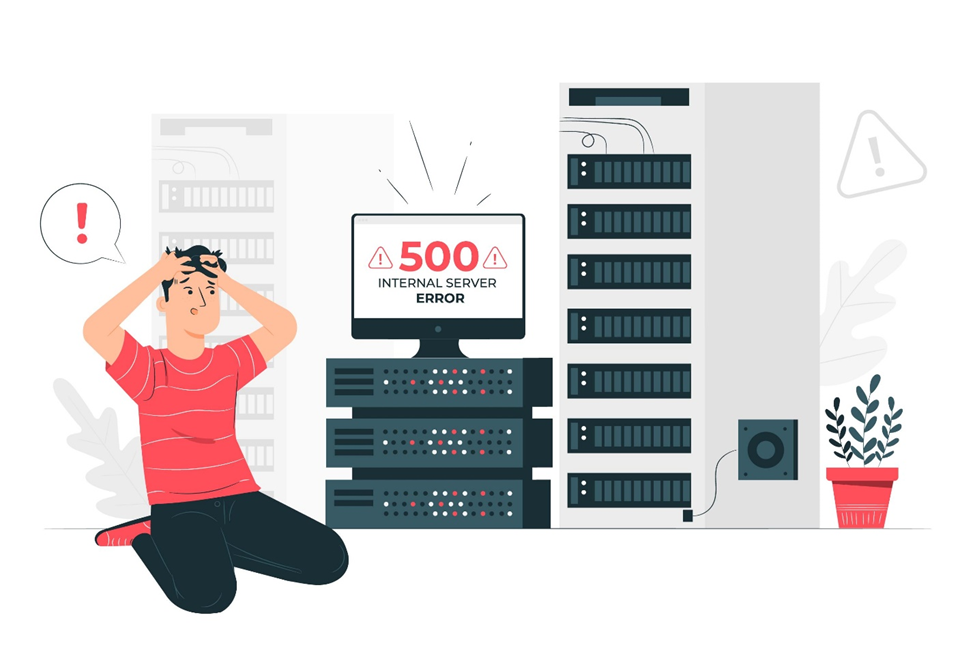Top Mistakes to Avoid When Upgrading to Managed VPS Hosting

Strong 8k brings an ultra-HD IPTV experience to your living room and your pocket.
As your website grows, so do your hosting needs. Upgrading from shared hosting to managed VPS hosting is a smart move for improved performance, control, and security. But if you rush into it without a clear plan, you may end up paying more for less — or worse, facing downtime, vulnerabilities, or service issues.
In this guide, we’ll walk you through the top mistakes to avoid when upgrading to managed VPS hosting so you can make the right decision for your business or personal project. Whether you’re looking for the best managed VPS hosting provider or simply want something cheap, secure, and low cost, this article will help you avoid the pitfalls that cost people time and money.
1. Not Understanding What “Managed” VPS Hosting Includes
A common mistake is assuming that “managed” means the hosting company takes care of everything. While managed VPS hosting does relieve you of many technical responsibilities, each web hosting provider includes different services in their management plan.
What to Expect:
• Operating System installation and updates
• Server monitoring and uptime support
• Basic security configurations
• Technical support
But advanced security hardening, custom software setup, or extensive backups might cost extra.
Avoid this: Always check what “managed” includes. Ask for a breakdown or SLA (Service Level Agreement). The best managed VPS hosting providers will offer transparent management plans.
2. Choosing a VPS Plan That’s Too Powerful or Too Weak
You might think that more resources automatically mean better performance. But that’s not always the case. Overprovisioning leads to unnecessary costs, while underestimating your needs causes slow websites and downtime.
Key Factors to Consider:
• Number of websites or apps
• CMS (WordPress, Magento, etc.) requirements
• Monthly traffic expectations
• Resource-heavy plugins or features
Pro tip: Start with a scalable low-cost VPS hosting plan and upgrade as needed. Many web hosting providers let you scale RAM, CPU, and storage with just a few clicks.
3. Ignoring Server Location and Latency
If your audience is in the USA, hosting your site on a server located in Europe or Asia will result in noticeably slower load times. Page speed is crucial — not just for delivering a smooth user experience, but also for improving your Google search rankings. Search engines prioritize fast-loading websites, and even a delay of a few seconds can cause users to bounce.
Why It Matters: Local servers reduce latency, improve SEO performance, and contribute to faster load times, which ultimately lead to higher engagement and conversion rates. A slow website, on the other hand, can drive potential customers away before they even see your content.
Choose wisely: Select a cheap VPS hosting provider with data centers in a geographic location closest to your target audience. This ensures optimal performance, better user satisfaction, and improved search visibility.
4. Falling for “Cheap” Without Checking the Fine Print
Everyone wants cheap VPS hosting, but not all low-priced options are created equal. Some hosting providers lure customers in with ultra-low monthly rates, only to trap them with long-term contracts that are hard to cancel. Others may offer little to no technical support, leaving you stranded during critical issues. It’s also common for budget VPS hosting providers to use outdated hardware or slow, overcrowded servers that can hurt your website’s performance. Essential features like automated backups, security patches, or even cPanel access might come with hidden fees.
Tip: A truly low-cost VPS hosting plan strikes the right balance between price, performance, and support. Don’t be penny-wise and pound-foolish—invest a little more upfront for a service that won’t let you down when it matters most. Always read the terms, review upgrade policies, and check for feedback from real customers before signing up.
5. Skipping Security Configurations
A secure VPS hosting setup is non-negotiable — especially if you collect customer data, run an eCommerce store, or handle any kind of sensitive transactions. Just because a server is managed doesn't mean it’s automatically secure. You still need to make sure essential security configurations are properly set up and maintained to protect against common threats like brute-force attacks, malware, or data breaches.
Don’t forget to enable firewalls such as CSF or iptables, install SSL certificates, keep your CMS and plugins updated, and use strong SFTP or SSH credentials. Overlooking even one of these can leave your site vulnerable.
Secure doesn’t mean expensive: Even cheap VPS hosting plans can offer strong protection if configured correctly. Look for managed VPS hosting providers that include key features like firewall setup, malware scanning, and DDoS protection as standard. This way, you get peace of mind.
6. Overlooking Backup and Disaster Recovery
One of the most costly and common mistakes is assuming that your VPS hosting provider automatically backs up your data. In reality, most cheap hosting providers either don’t include backups by default or offer them so infrequently that they’re virtually useless in a real emergency. A server crash, accidental deletion, or malware attack can wipe out weeks or months of hard work in seconds if you're unprepared.
Always ask important questions before committing: Are backups included in the plan? How often are they taken — daily, weekly, or monthly? And how quickly and easily can you restore your data if something goes wrong?
Think ahead: Choose the best managed VPS hosting services that offer automated daily backups, fast restore options, and preferably off-site or cloud-based storage. Even if this feature adds a little to your monthly cost, it’s a small price to pay for long-term data security and business continuity.
7. Migrating Without a Plan
Moving from shared hosting to managed VPS hosting is a major upgrade, but the migration process involves much more than just copying files. You’ll need to properly configure DNS records, set up emails, optimize databases, and reinstall SSL certificates. A single overlooked step can lead to broken websites, missing data, or extended downtime.
Common mistakes include not thoroughly testing site functionality after migration, failing to create a full backup beforehand, or experiencing delays due to DNS propagation issues. These problems can impact your SEO, frustrate users, and lead to lost revenue.
What to do: Ask if your managed VPS hosting provider offers free or assisted migration services. The best managed VPS hosting companies often include hands-on migration support to ensure everything transfers correctly, securely, and without unnecessary interruptions. Planning your move properly saves time, stress, and potential business loss.
8. Not Comparing Providers Side by Side
With hundreds of VPS hosting providers available, one of the biggest mistakes you can make is choosing the first option you come across — even if they advertise cheap and secure VPS hosting. Not all providers are created equal, and a flashy price tag doesn’t guarantee quality.
Take the time to compare multiple options based on what really matters: price versus features, data center locations, uptime guarantees (look for at least 99.9%), genuine customer reviews and the hosting provider’s average response time for 24/7 technical support.
Choose smartly: The best managed VPS hosting solution isn’t always the most expensive — it’s the one that offers the right mix of performance, support, reliability, and scalability for your specific needs, all at a fair price. Doing your research upfront can save you from costly headaches later.
9. Ignoring Performance Monitoring Tools
Once you’ve upgraded to a managed VPS hosting plan, monitoring your server’s performance becomes essential. Unlike shared hosting, a VPS gives you dedicated resources — but without proper oversight, you risk running into issues like slow load times, crashes, or security vulnerabilities when resources max out.
You should regularly track metrics like RAM usage, CPU load, disk space, and traffic patterns to ensure your site stays fast and responsive.
Don’t skip this: Many of the best managed VPS hosting services include built-in performance monitoring tools. Take advantage of them to make sure your cheap VPS hosting plan delivers consistent, secure, and reliable performance — without any surprises.
10. Not Using a Content Delivery Network (CDN)
Even with a powerful VPS, serving static content (images, CSS, JS) through a CDN can improve site speed.
Benefits of Using a CDN:
• Faster load times
• Better performance under traffic spikes
• Improved global reach
Low-cost solution: Services like Cloudflare offer free or affordable CDN options that integrate easily with most managed VPS hosting plans.
11. Relying Only on Customer Support Instead of Learning Basics
Managed doesn’t mean you’re off the hook completely. Knowing basic server commands or cPanel tasks can help you respond faster and solve minor issues on your own.
Why This Helps:
• Speeds up troubleshooting
• Helps you communicate better with support
• Prevents small issues from becoming big ones
Invest in learning: The best managed VPS hosting experience comes when you balance provider support with a little self-education.
12. Forgetting to Optimize the Website Itself
No matter how powerful or secure your VPS is, if your website isn’t optimized, you’ll still experience performance issues.
Must-Do Optimizations:
• Compress images (TinyPNG, WebP)
• Use caching plugins (like WP Rocket, W3 Total Cache)
• Minify JS/CSS files
• Lazy load images and videos
Bottom line: Your VPS is only as good as the website running on it. Optimize both to get the most value from your cheap and managed VPS hosting plan.
Final Thoughts: How to Choose the Right Managed VPS Hosting?
Upgrading to a managed VPS hosting solution is a big step forward for your website or online business. But don’t let common mistakes turn it into a costly misstep. To recap:
• Know what “managed” includes
• Don’t go too big or too small
• Prioritize location and performance
• Balance “cheap” with real value
• Demand a secure, scalable environment
When evaluating your options, aim for providers that offer a low-cost VPS hosting plan without sacrificing performance or security. And remember — the best managed VPS hosting providers the ones that fit your unique needs, support you 24/7, and help you grow with confidence.
Note: IndiBlogHub features both user-submitted and editorial content. We do not verify third-party contributions. Read our Disclaimer and Privacy Policyfor details.







